
Ready to teach about animal adaptations and plant adaptations to upper elementary students? You are in the right place! We have so many adaptations lessons to choose from.
Ever look at a platypus and think, “What’s the deal with that bill?” or ponder why camels look like they’re storing luggage in their backs? Well, you’re in the right place. Today, we’re zeroing in on animal adaptations—those fascinating quirks and features that make each creature a master of its domain.
Ready to unravel some of nature’s most clever design hacks?
Let’s start with the key concepts for adaptations.
What are structures?
Structures are the physical features of plants and animals that allow them to form a variety of functions. Both plants and animals have internal and external structures that help them survive in their environments.
What are examples of structures?
Examples of structures in plants:
- Leaves
- Roots
- Stems
- Flowers
- Xylem
- Chloroplasts
Examples of structures in animals:
- Skin
- Limbs
- Mouth
- Eyes
- Skeleton
- Heart
Functions describe the purpose or the role of a structure identified within a plant or animal, such as the leaves of a plant performing photosynthesis so plants can convert sunlight into energy. The hollow bones in birds help them fly more efficiently.
By examining the functions of structures in plants and animals, we can see how organisms have changed over time to survive and thrive in their environments.
Here are five fabulous ideas to get your students exploring various organisms!
#1 Adaptations Scavenger Hunt
Whether it’s the schoolyard or a local park, nature is teeming with examples of animal and plant structures—and their functions.
First off, create a scavenger hunt list of structures for your students to find. We’re talking roots that slurp up water and nutrients, flowers that are basically billboards for bees, stems that are like the plumbing system of a plant, and so much more. Don’t forget the animal kingdom! Teeth that are champs at chomping and legs built for running, jumping, or even swimming.
Next, hand out some clipboards and pencils, or hey, let them go digital on tablets if you’re fancy like that. Students will record their observations, jotting down notes and maybe even sketching a leaf or snapping a photo. Think of it as nature’s Instagram, but for science!
Once you’re back in the classroom, it’s Show and Tell time. Host a class discussion where students can share their findings. Who found the most unique adaptation? Which observations sparked a “Wow, I never knew that!” moment?
The goal here is to have your students not just look at nature but really see it. By identifying these everyday structures and their functions, they’re laying down the building blocks for understanding complex ecosystems. Plus, nothing beats learning that comes with a breath of fresh air!
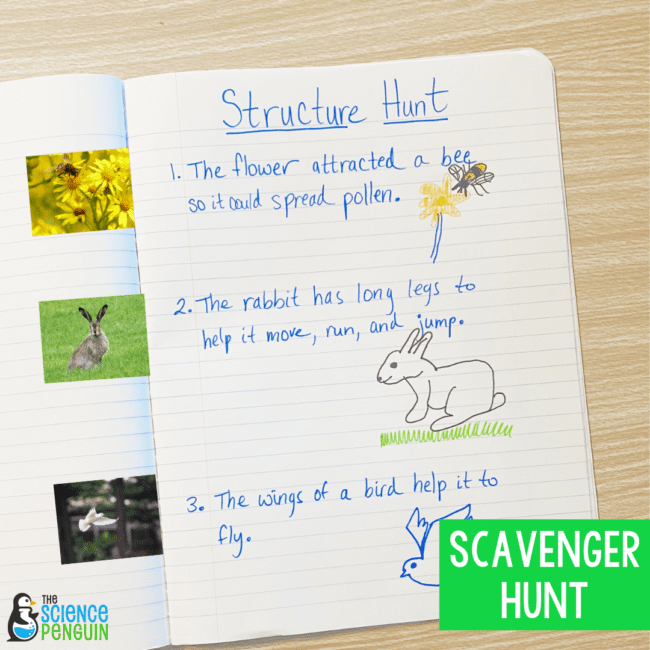
#2 Research and Creativity Project
You know how kids light up when talking about their favorite animals? Why not channel that enthusiasm into a dynamic learning experience?
Here’s the scoop: Let your students pick an animal they’re curious about and the ecosystem it calls home. But don’t stop at “this animal lives in the forest.” Have them dive into the nitty-gritty of structural adaptations—like why a monkey has a tail that can grasp branches or why a camel has humps. Each of these structures has a function, and it’s up to your budding scientists to figure it out!
Now, for the cherry on top: Let students decide how they want to present their zoological investigations. Why? Because creativity thrives on choice!
A diorama might let them show off their artistic chops while someone else might dazzle with a slick slideshow. Got a future Spielberg in your class? A short media production could be their jam.

#3 Adaptations Task Cards
As students familiarize themselves with the variety of plant and animal structures, practicing recalling definitions and examples, comparing and contrasting terms, and working with visual stimuli like simple diagrams and tables is necessary.
With these 20 NO PREP multiple choice task cards, you can be sure that students understand the most important terms needed to understand animal and plant structures and their functions.
These aren’t your run-of-the-mill flashcards; they encourage critical thinking by posing questions in context. You can use them in a treasure hunt, repurpose your Connect Four game, organize a task card relay race, make vocab a sport with basketball shots, or hold a class review game.
Each activity adds a layer of fun while reinforcing vocabulary and concepts. From solo learning to team challenges, these task cards are the multitaskers of your teaching toolkit.
See them on TpT: Adaptations Vocabulary Task Cards
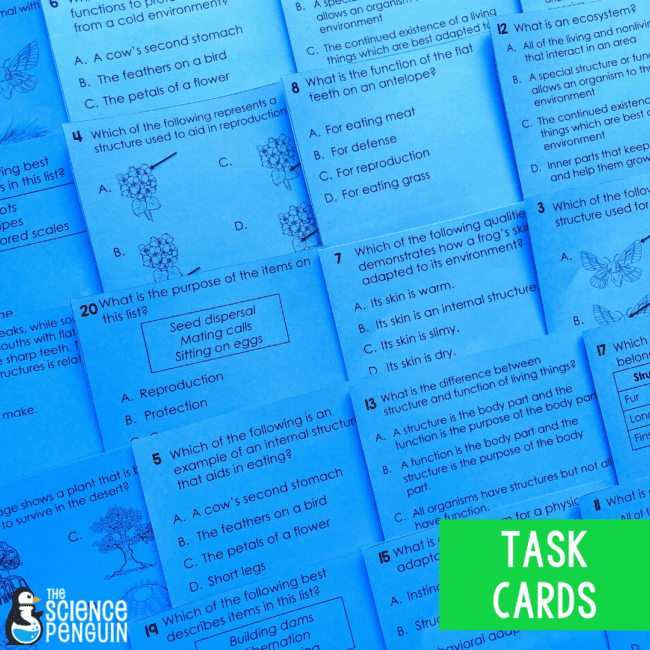
#4 Adaptations Stations
Stations were a HUGE hit for my students as they led to more self-paced experiences along the way with the content. You have 9 activities for your students to engage with, but you can choose some or all of them!
Each station provides hands-on experiences to compare structures and functions. They are easy to prep, students have sheets to record information, and answer keys are provided.
Here are the 9 stations:
Read It: Read about the structures of giraffes, Madagascar geckos, agave, and earthworms. Answer questions.
Create It: Use information provided to design a camel that would be adapted to a tundra environment.
Watch It: Watch two short videos and answer questions.
Match It: Match different types of animal feet to the environment best suited to those foot types. Answer questions.
Analyze It: Compare and contrast the traits of polar bears and black bears.
Draw It: Draw pictures for three terms— structure, function, and environment.
Explore It: Students explore tail adaptations of a monkey and beaver using a pipe cleaner and a piece of foam. Then, they identify how each animal’s tail helps it move.
Explain It: Compare the shapes and functions of a beaver’s tail and a capuchin’s tail. Complete a table.
Sort It: Sort statements as describing leopard geckos or poison dart frogs and describe how their structures help them survive in their environments.
Check them out on TpT: Adaptations Science Stations
#5 Labs in a Snap
Structures and Functions Labs in a Snap is designed to help teachers easily incorporate real-world observations and models to learn how bird beaks are related to the food a bird eats, structures and their functions in a flower, and how the structures on our bodies help us survive. There are 3 labs.
1. Engagement Lab: Our Bodies
How do the structures on our bodies help us survive?
2. Exploration Lab: Flower Structures
Let’s explore the parts of a flower.
3. Elaboration Lab: Bird Beaks
How is a bird’s beak related to what it eats?
Simple. Meaningful. Ready to use!
See it on TpT: Structures and Functions Labs in a Snap
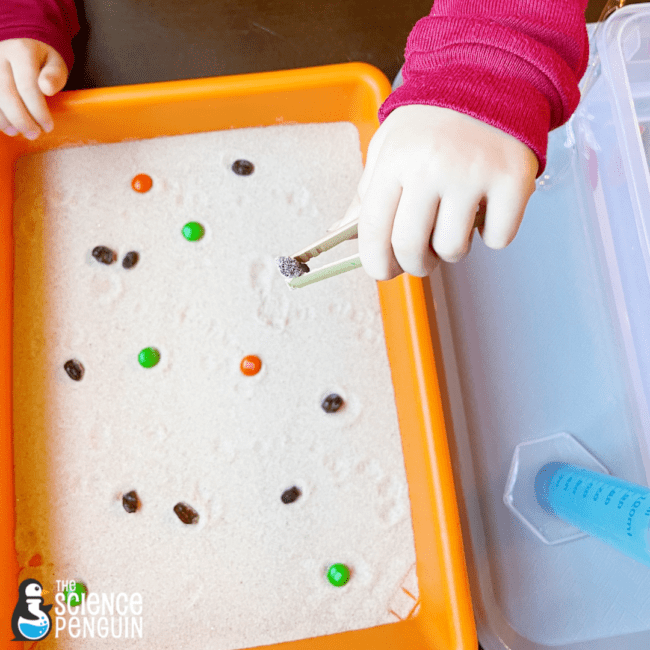
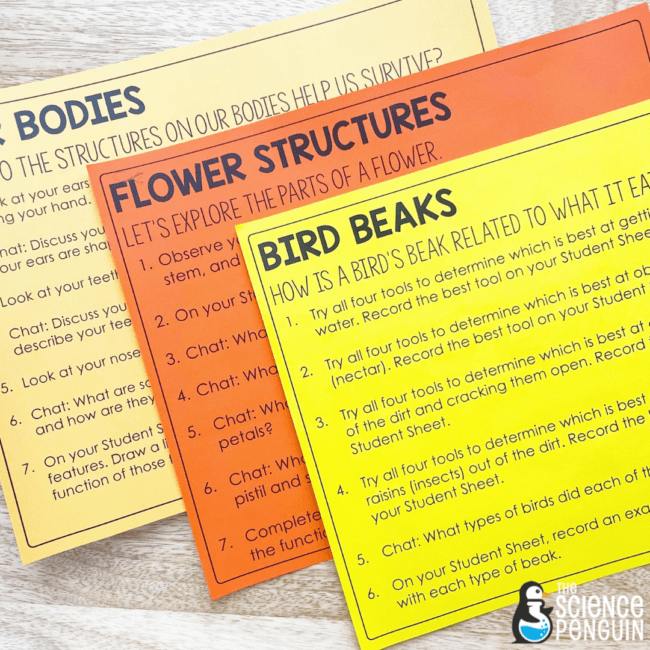
Bonus: Monkey Tails for K-2
Ready to take a hands-on approach to animal adaptations? For your primary classes, have the students craft a monkey’s tail from a simple pipe cleaner and a printout. It’s budget-friendly and oh-so-engaging.
But this activity is more than just crafty fun. It’s a launchpad for diving into key vocab like “environment,” “structure,” and “function.” A monkey’s tail isn’t just for show—it helps with balance, movement, and stability! That’s functional design at its finest!
As for the monkey’s environment? Think rainforests and jungles, not deserts or ice caps. These are words that even your youngest scientists can grasp, and they’ll add a layer of understanding that’s more valuable than a barrel of, well, monkeys.
Introduce these terms. Trust me, your kids can handle it and they’ll feel like real scientists in no time. 🐒
See this on TpT: K/1 Science Day
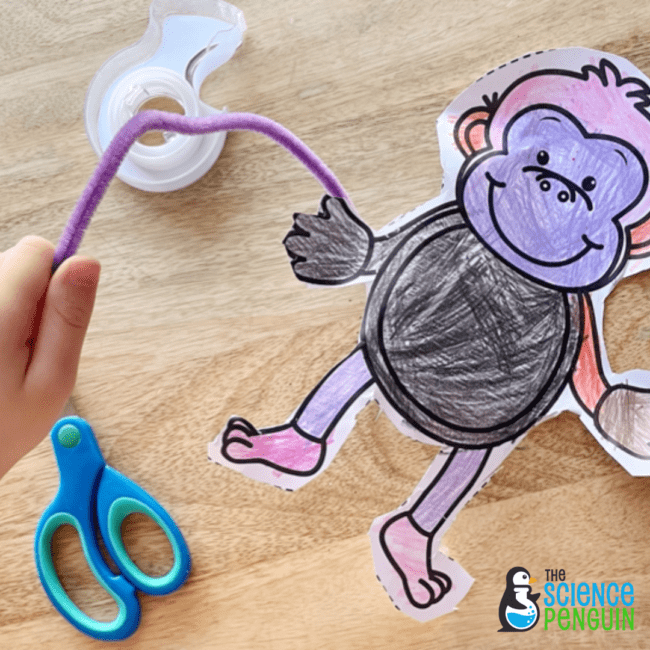

Sign up for the Free Resource Library
This is an exclusive library of 40+ science printables, labs, activities, and games for grades 3-6. Sign up and check your email for immediate access.

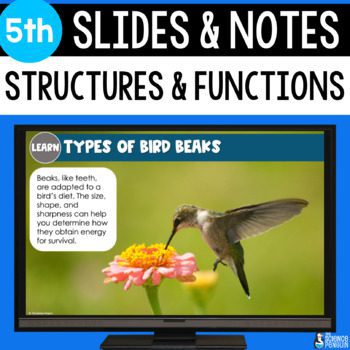
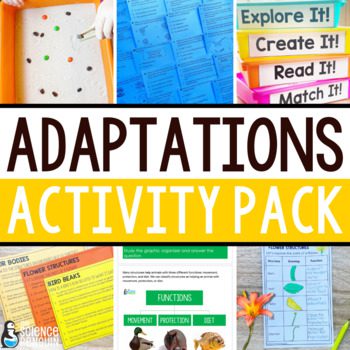


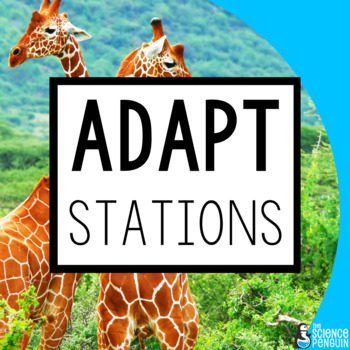

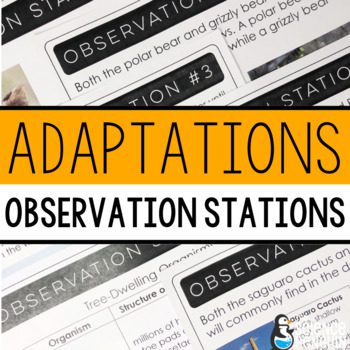


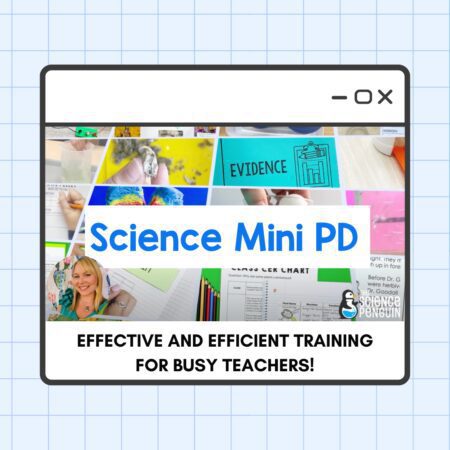


13 thoughts on “5 BEST Ideas to Teach Animal Adaptations and Plant Adaptations”
Wow! This is awesome! Thank you for sharing these ideas and resources! We teach animal adaptations in 3rd grade, and I love your ideas! I’m definitely going to use these! 🙂
Jamie
Thrills in Third Grade
Thanks, Jamie! 🙂
Thank you! I pin, buy and save so much of your great materials. Please blog about mixtures and solutions. It was my lowest TEK on the STAAR last year and I need all the help I can get. Your ADAPT packet pulled that TEK to the top of the list.
I can definitely do that. Thanks for the feedback. 🙂
What an amazing and thorough post! Thanks so much Ari!
🙂 Shelley
The Write Stuff Teaching
Thanks for all the planning you do. I’m pinning now!
You are my go to resource for all my homeschooling science needs. Thank you!! My daughter loves all animals, so she will adore this. Fantastic post – so many great resources!
For the “bulletin boards” did you use poster board?
Great stuff! Thank you for your hard work.
Wow ari,
I really liked your activities for adaptations. Do you have any activities for fossils. My class is moving onto that topic next.
Thanks,
Regina
Great Stuff!
I did similar stations in my fourth grade class when we were learning about adaptations with the inspiration of this post and my students absolutely LOVED them. They were engaged and I loved to see them applying their knowledge in different ways. Thank you!
Wow amazing. Thanks a lot .🙂
Comments are closed.